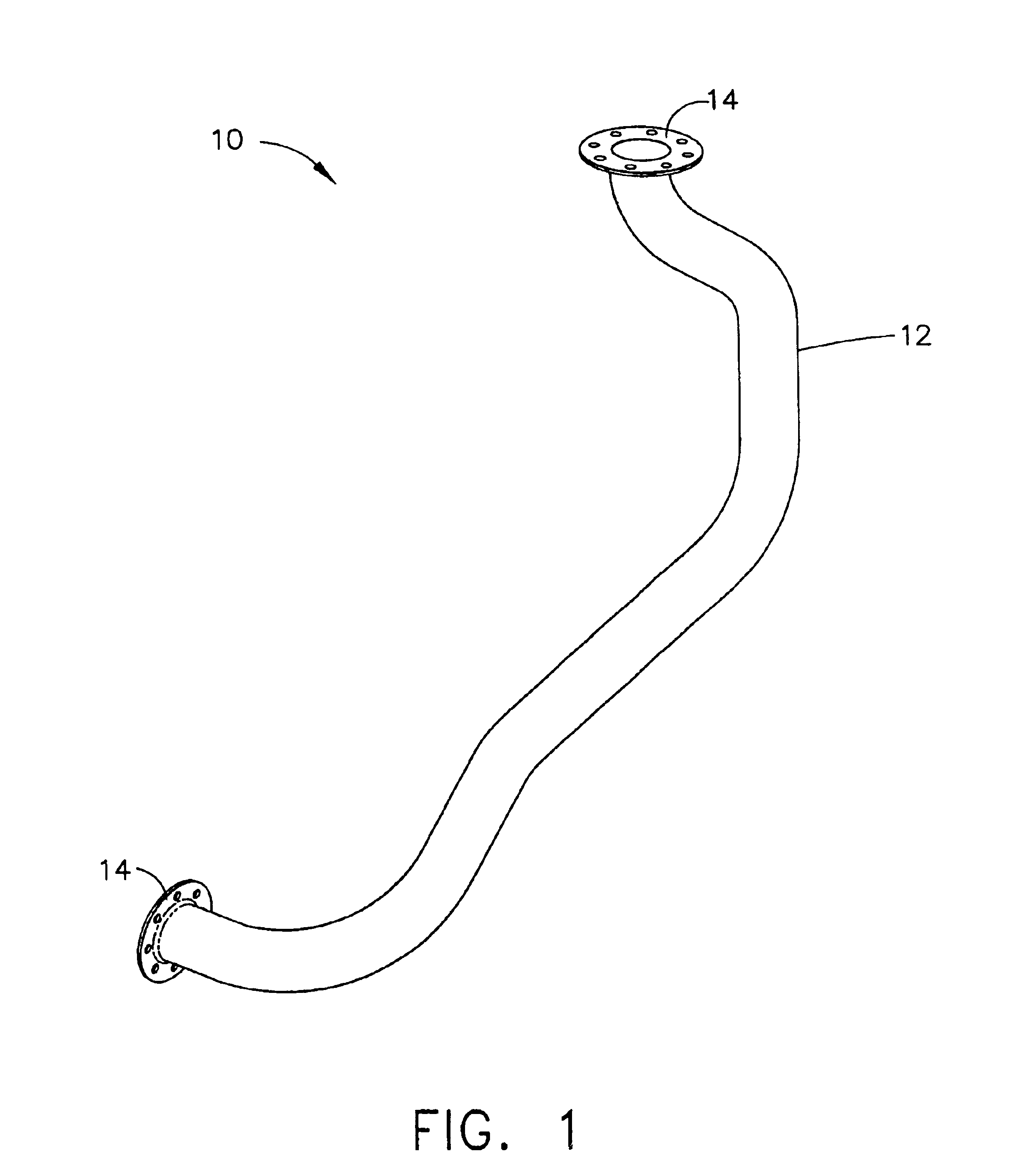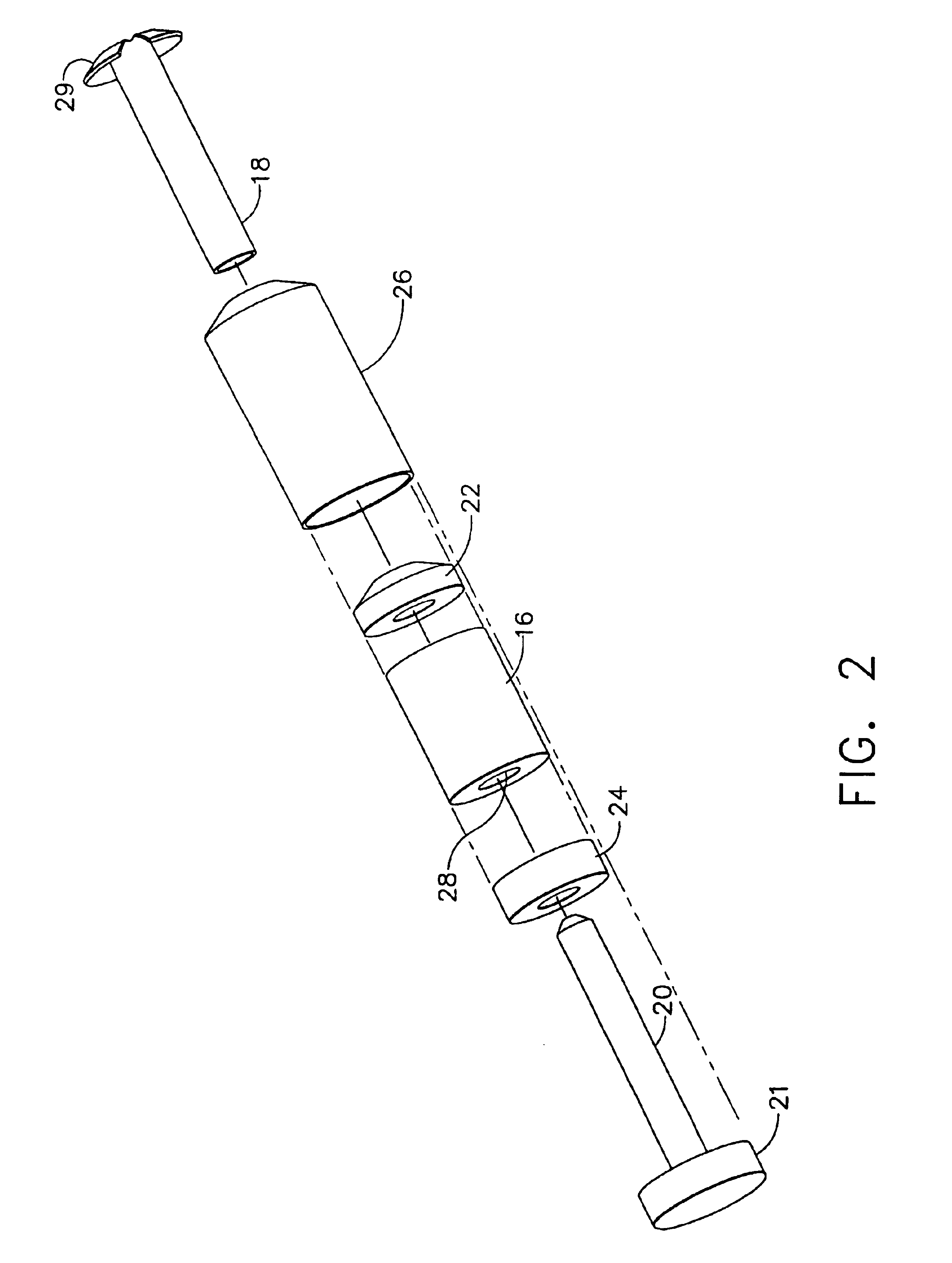Nanophase composite duct assembly
- Summary
- Abstract
- Description
- Claims
- Application Information
AI Technical Summary
Benefits of technology
Problems solved by technology
Method used
Image
Examples
Embodiment Construction
The following description of the preferred embodiments is merely exemplary in nature and is in no way intended to limit the invention, its application, or uses.
Referring to the drawings, a nanophase composite duct assembly according to the present invention is illustrated and generally indicated by reference numeral 10 in FIG. 1. As shown, the nanophase composite duct assembly 10 generally comprises a high-pressure liquid duct 12 joined to a high-pressure liquid ducting flange 14. Preferably, the high-pressure liquid duct 12 is an ultra-high strength nanophase aluminum alloy and the high-pressure liquid ducting flange 14 is formed from a ceramic particulate in a metal matrix, wherein the metal matrix is preferably aluminum. Accordingly, the nanophase composite duct assembly 10 provides significant weight and cost savings over superalloy high-pressure ducting of the known art.
The high-pressure liquid duct 12 is preferably formed by first synthesizing the nanophase aluminum alloy usin...
PUM
| Property | Measurement | Unit |
|---|---|---|
| Volume | aaaaa | aaaaa |
| Volume | aaaaa | aaaaa |
| Volume | aaaaa | aaaaa |
Abstract
Description
Claims
Application Information
 Login to View More
Login to View More - R&D
- Intellectual Property
- Life Sciences
- Materials
- Tech Scout
- Unparalleled Data Quality
- Higher Quality Content
- 60% Fewer Hallucinations
Browse by: Latest US Patents, China's latest patents, Technical Efficacy Thesaurus, Application Domain, Technology Topic, Popular Technical Reports.
© 2025 PatSnap. All rights reserved.Legal|Privacy policy|Modern Slavery Act Transparency Statement|Sitemap|About US| Contact US: help@patsnap.com



